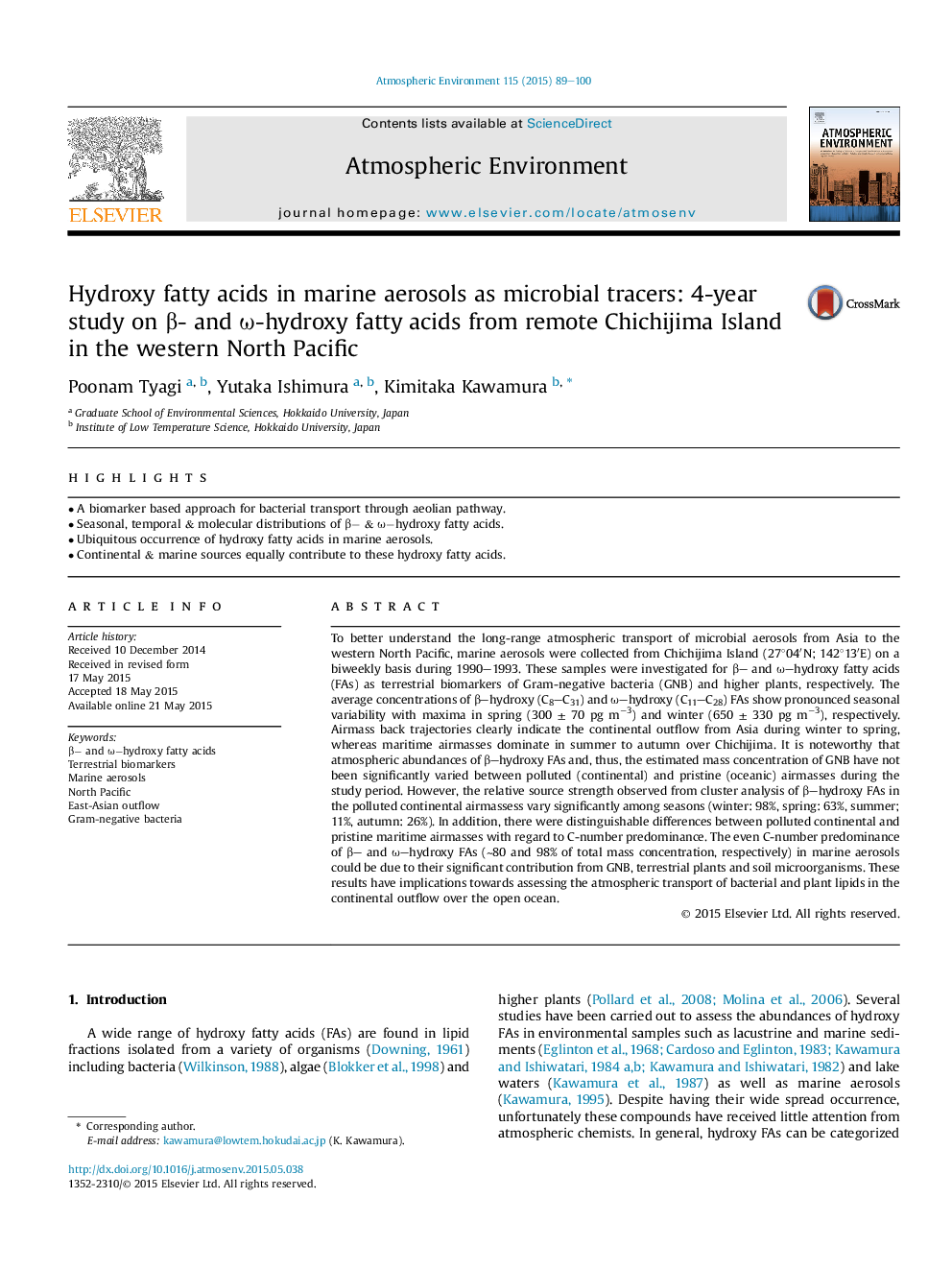| کد مقاله | کد نشریه | سال انتشار | مقاله انگلیسی | نسخه تمام متن |
|---|---|---|---|---|
| 6337773 | 1620356 | 2015 | 12 صفحه PDF | دانلود رایگان |

- A biomarker based approach for bacterial transport through aeolian pathway.
- Seasonal, temporal & molecular distributions of βâ & Ïâhydroxy fatty acids.
- Ubiquitous occurrence of hydroxy fatty acids in marine aerosols.
- Continental & marine sources equally contribute to these hydroxy fatty acids.
To better understand the long-range atmospheric transport of microbial aerosols from Asia to the western North Pacific, marine aerosols were collected from Chichijima Island (27°04â²N; 142°13â²E) on a biweekly basis during 1990-1993. These samples were investigated for β- and Ï-hydroxy fatty acids (FAs) as terrestrial biomarkers of Gram-negative bacteria (GNB) and higher plants, respectively. The average concentrations of β-hydroxy (C8-C31) and Ï-hydroxy (C11-C28) FAs show pronounced seasonal variability with maxima in spring (300 ± 70 pg mâ3) and winter (650 ± 330 pg mâ3), respectively. Airmass back trajectories clearly indicate the continental outflow from Asia during winter to spring, whereas maritime airmasses dominate in summer to autumn over Chichijima. It is noteworthy that atmospheric abundances of β-hydroxy FAs and, thus, the estimated mass concentration of GNB have not been significantly varied between polluted (continental) and pristine (oceanic) airmasses during the study period. However, the relative source strength observed from cluster analysis of β-hydroxy FAs in the polluted continental airmassess vary significantly among seasons (winter: 98%, spring: 63%, summer; 11%, autumn: 26%). In addition, there were distinguishable differences between polluted continental and pristine maritime airmasses with regard to C-number predominance. The even C-number predominance of β- and Ï-hydroxy FAs (â¼80 and 98% of total mass concentration, respectively) in marine aerosols could be due to their significant contribution from GNB, terrestrial plants and soil microorganisms. These results have implications towards assessing the atmospheric transport of bacterial and plant lipids in the continental outflow over the open ocean.
Journal: Atmospheric Environment - Volume 115, August 2015, Pages 89-100